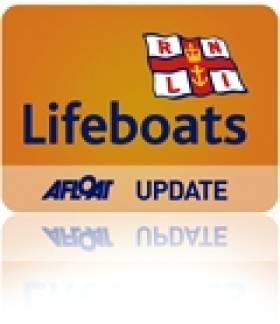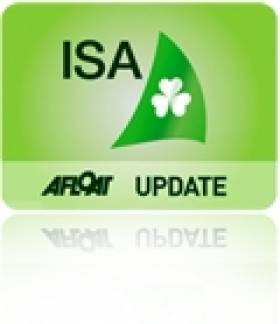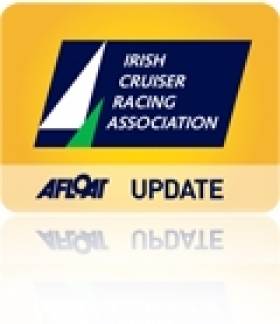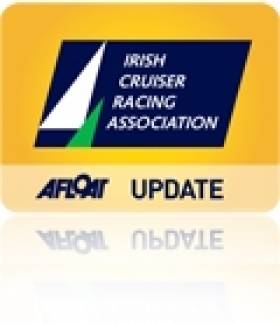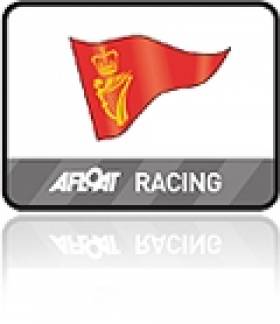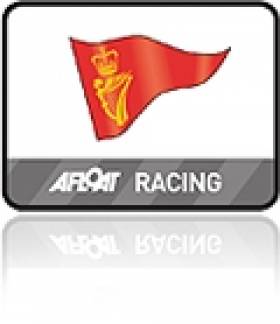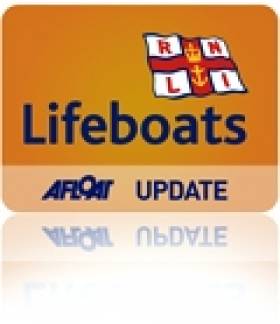Displaying items by tag: Crosshaven
Lifeboat Assists Sinking Fishing Vessel in Cork Harbour
Yesterday while out on exercise in a squally southwesterly force four winds the crew of the Ballycotton lifeboat Austin Lidbury received details of a 26 foot fishing vessel that had sunk off Roches Point, at the mouth of Cork Harbour. The two crew members had taken to a liferaft and were retrieved by a fishing vessel in the area. Crosshaven lifeboat also launched and was first on scene. Ballycotton lifeboat was stood down and returned to station.
Related Safety posts
RNLI Lifeboats in Ireland
Safety News
Rescue News from RNLI Lifeboats in Ireland
Coast Guard News from Ireland
Water Safety News from Ireland
Marine Casualty Investigation Board News
Marine Warnings
All Ireland Champs Move to Kinsale
The re-run of the All Ireland Sailing Championships will take place in Kinsale and not Crosshaven on November 20th according to a press release from the Irish Sailing Association published today.
A minimum of three races must be completed for the competition to conclude and the ISA Helmsman's Trophy awarded.
The final, originally scheduled to take place in Royal Cork Yacht Club on the 26th of September, had to be abandoned due to an absence of wind.
The competition will be sailed in the ISA SailFleet J80's which are currently based in Kinsale Yacht Club. Due to the difficulty in safely sailing the fleet from Kinsale to Crosshaven the venue had to be changed, however the host club remains Royal Cork Yacht Club who are now kindly assisted by Kinsale Yacht Club.
8 teams will be competing for the ISA Helmsmans Trophy. As this competition is recognised as a new event, no previous points shall be carried forward. Each competitor begins with a blank score card.
The finalists are:
Anthony O'Leary
Ewen Barry
Garrett May
James Espey
Neil Kenefick
Niall Henry
Nicholas O'Leary
Nick Walsh
Who'll win? We're starting a readers poll on Monday. Click back to cast your vote!
Castlepoint Boatyard
Castlepoint Boatyard is based in Crosshaven, Co. Cork, it offers the following services...
25 Tonne Travel Hoist
• Wood and GRP Repairs
• Respray, Coppercoat and
• Osmosis Treatments
• Bow Thruster and Heating
• Agents for Mermaid Diesel Engines
• Winter Storage
• Maintenance and insurance work
New 25 Tonne Travel Hoist
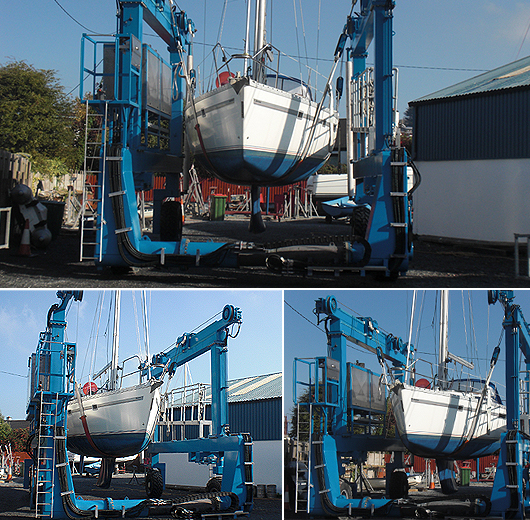
Crosshaven,
Co. Cork
Tel: 021 4832154
Email: [email protected]
New Trailerable 30 Footer to be Unveiled at ICRA Conference
Commodore Barry Rose is urging Cruiser Racers fans to support this weekend's eighth annual ICRA conference at the Carrigaline Court hotel in Carragaline, County Cork.
There's a big line up for the one day event that includes a presentation on an innovative concept to develop a 30 Footer one design concept that can also sail under IRC handicap. The idea is that it will be trailerable to attend ICRA Nationals and other events around Ireland. Rory Staunton travels from the UK to make the 30 footer presentation.
Rose says Saturday's event gives an opportunity to exchange 'constructive opinions to promote and develop the cruiser/racing', the biggest sector of Irish Sailing.
The event includes a celebration dinner for the Commodores Cup team at the Royal Cork Yacht Club.
Designers John Corby and Mark Mills will be present to update us on IRC developments and boat design and their thoughts on where boat design is heading. More HERE
On the Forum: Dry Sailing at Royal Cork
A dry sailing facility would make the Royal Cork Yacht Club one of the best in the world. It's a pity it may be too expensive, says Patton. It is a pity too about the lack of highly competitive racing in a club full to the brim with seriously talented sailors, he says. Read more HERE
Panz is looking for help identifying a location of a sailing venue. A photo shows a National 18 on the hard at a clubhouse that might be in Derry? Can you help identify this club house? HERE
Marinerscove Takes Narrow Lead in 'Boat of the Year' Opinion Poll
Marinerscove leads Afloat's sailing Boat of the Year opinion poll that has attracted over 1700 votes to date. After 20 days of voting the lead has changed several times in the fun poll and early leader Erisslanan, who shared boat of the week with Mariners at Cork week is now in third place on 227 votes, some distance behind ISORA winner Raging bull on 607 votes. 81 votes clear ahead is the Crosshaven boat that also bagged the British IRC title this year. Dave Dwyer's Marinerscove was of course also the middle boat in the victorious Irish Commodores Cup team in August. The ICRA boat of the year award will be awarded on November 13th at the Cruiser Racer conference in Carrigaline. You can vote by using the poll on the left hand side of Afloat's home page.
Latest Photos From Royal Cork's October League
Bob Bateman's latest photos from yesterday's Royal Cork's October League are over the fold. Having sailed six races in the O'Flynn Exhams Autumn League and, with a discard applied, a trend is emerging writes Claire Bateman. The exception to this is White Sail 1 and 2 who have had four races and at the wish of the classes have reverted to two races each day. It was another light day with yachts waiting patiently for the breeze to fill and when it did it was a light breeze from the west going further into the south as the day went on. Richard Leonard's Green Fleet were on a laid course outside the harbour and having postponed the first race during the start sequence, he eventually got the fleet going when the west breeze settled. Class Three and White Sail 1 were started together followed by Class Four and White Sail 2. The mixing of classes made for interesting racing as it kept the boats in close proximity to one another and a second race was sailed successfully thereafter.
On David O'Brien's harbour course with the Red Fleet the breeze was slower to fill in. However, when it did Class 2 and the 1720s were sent on a course to Ringabella against the flood tide. The Class Zero and Class One fleets were over eager and suffered a general recall so they started last. Again they were over anxious and were bunched at the pin end of the line but after some manoeuvering a clear start was called and they too set off for Ringabella, the boats heading for the western shore to avoid the tide faring best. First to reach Ringabella was Jump Juice but she obviously didn't feel like leaving as she clung to the mark having to suffer the fate of watching many of the class rounding before she eventually got free. In Class One IRC Donal O'Leary's D-Tox is on 7 points but David Scott's EOS is on 20 points with Michael Wallace just one point adrift on Felix.
The position in Class Three IRC appears to be the most obvious with the prowling Kenefick/O'Brien Tiger leading with five first places followed by Ian Traver's Bandit on 9 points and in Class Zero IRC the same equally obvious situation pertains with Kieran Twomey's Gloves Off on 5 points and Conor Phelan's Jump Juice on 9 points. In Class Four IRC Mike Sexton's Granny Knot and Alan Mulcahy's Sundancer are tied on 7 points each.
This league is also counting for the SCORA 2010 League as is the April league from Kinsale a total of fifteen races overall with three discards so this also adding spice and competition to the event.
To-day's day prizes were presented by Eamonn Muldoon of O'Flynn Exham's and racing will continue next Sunday with first gun at 10.55 am.
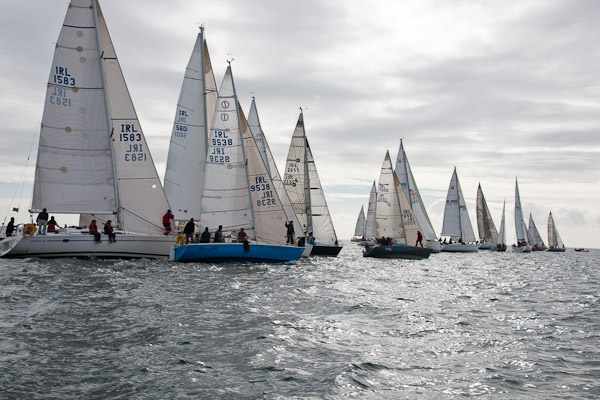
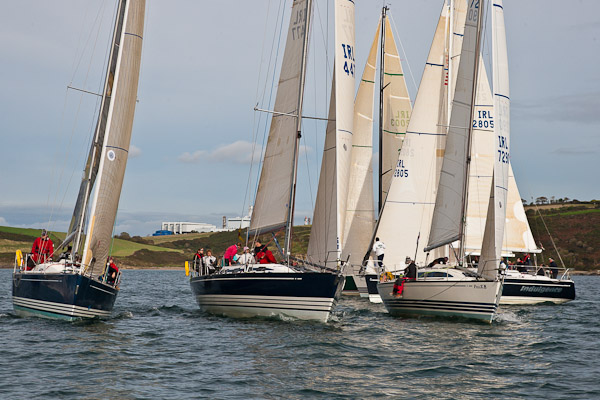
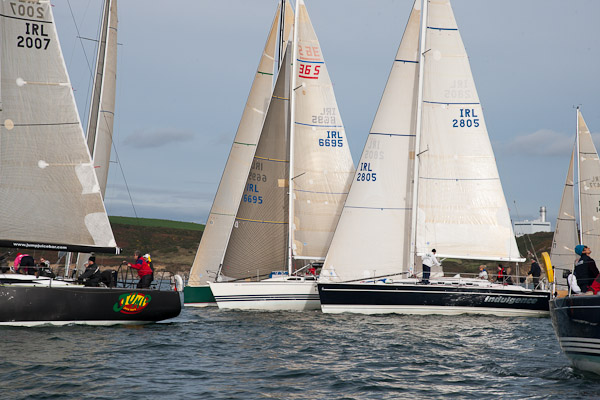
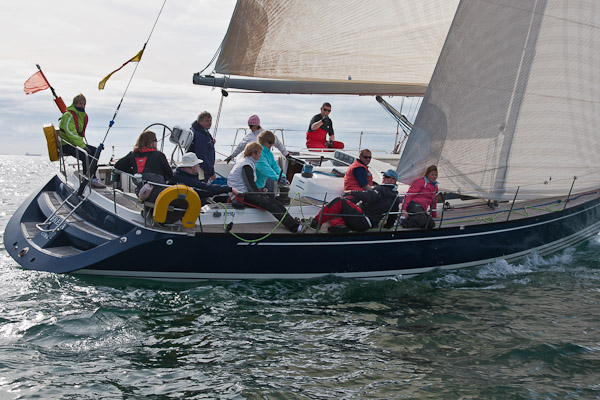
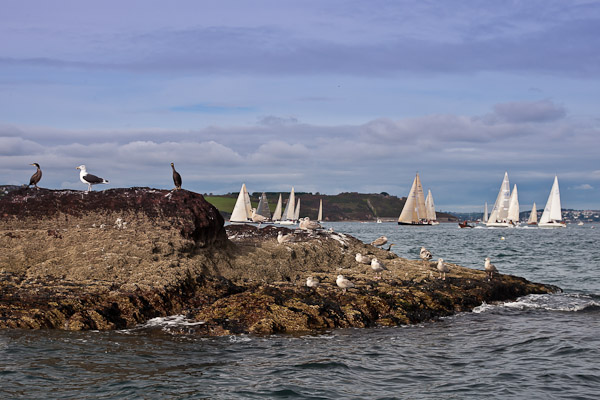
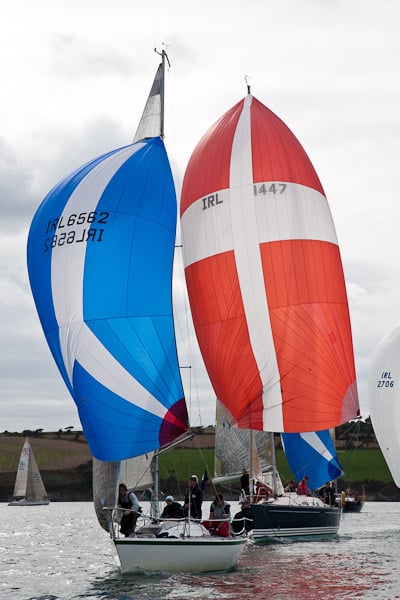
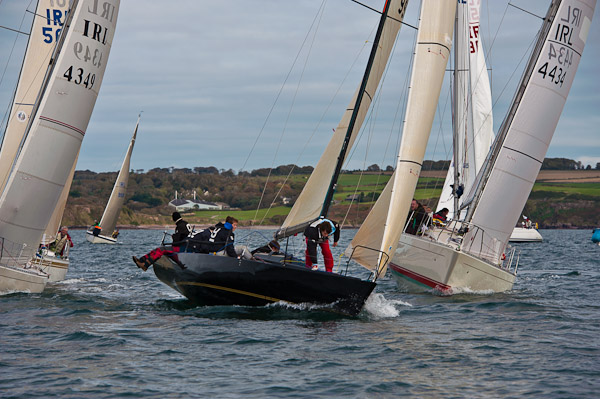
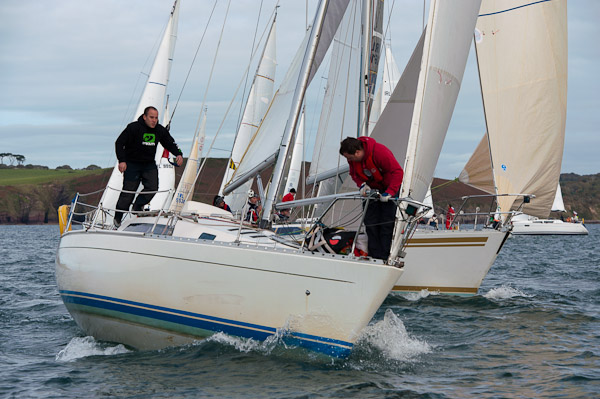
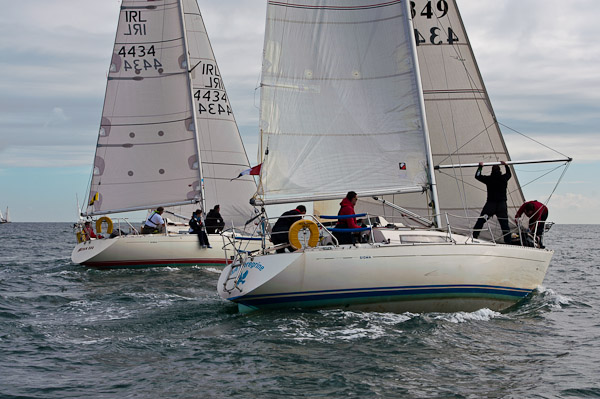
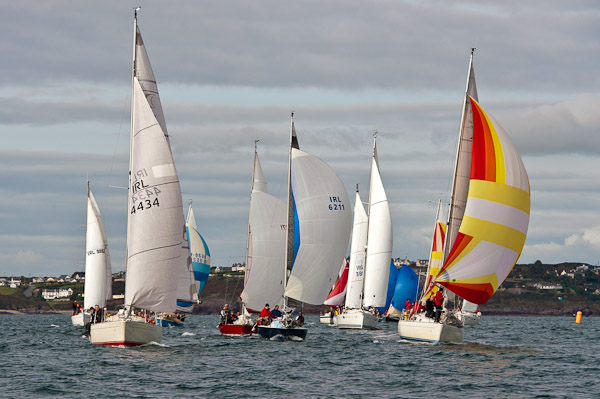
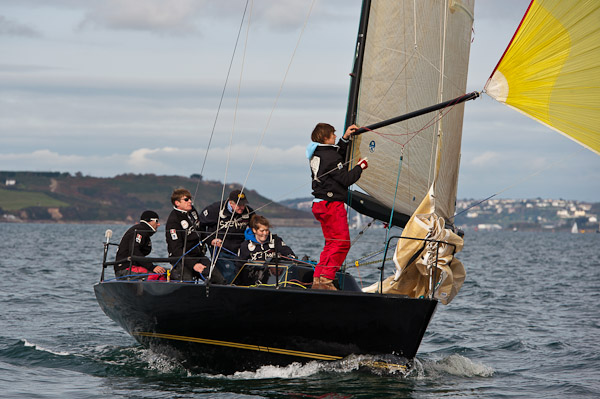
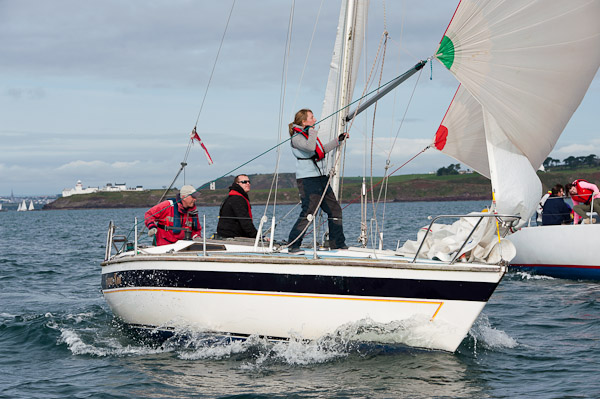
Commodores' Cup Celebration Dinner to be Held at Royal Cork
Team Ireland boats, Antix - Anthony O Leary, Marinerscove.ie - Dave Dwyer and Roxy 6 - Rob Davies and Andrew Creighton, will be represented on the night.
The dinner cost will be €30 and booking will be on first come/first served basis. Book with [email protected] or call 021 4831023.
Crotty Stays on Top in 1720s
The sun may have been missing from the scene this morning at Crosshaven and the skies may have been dark and overcast but the wind was blowing, the buzz was very definitly in the the air and the spring was in every sailors'step as they arrived in their droves to set forth on the second day of the O'Flynn Exhams Autumn League at the Royal Cork Yacht Club writes Claire Bateman. Photos from race two on the gallery click HERE
The wind was gusting some 26 knots on the marina but by the time the boats had reached the comittee boats for the start of racing the east wind had moderated to some 10/12 knots and later went north easterly, was obviously going to provide a good day of sailing. The two Race Officers had put their minds together on the courses and decided to sail both fleets within the harbour and this proved to be an outstanding success. Race Officer David O'Brien was today on Classes Three, Four and Whitesail one and two and his boat "Sabrone" was kindly provided by Admiral Paddy McGlade who was on board for the racing. Richard Leonard's committee boat "Capta Ventum" was kindly provided by Pat Healy who was also on board to watch the day's events unfold.
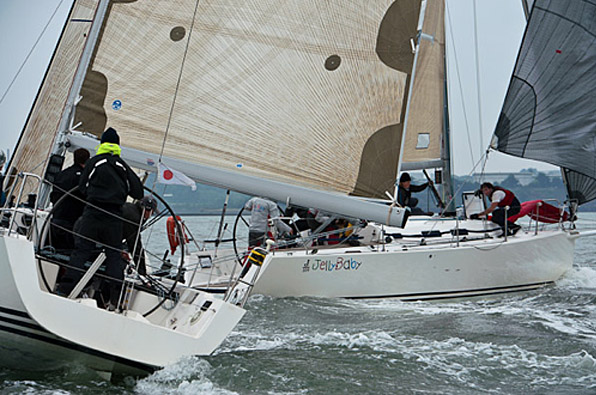
Tight handling in the second day of Cork's Autumn League races. Photo: Bob Bateman. More on the gallery HERE
There are exceptionally high spring tides at the moment and this exercised the minds of the all sailors to keep out of the strong tide and on the other hand to avoid going aground on any of the banks around the harbour. In this regard the one casualty was Peter Webster's Thistle from Class Four which went aground and spent some time waiting for the incoming tide.
The tight courses and the racing tide coupled with the sufficient breeze made for close racing. John Crotty was a very happy man sailing the 1720 Two 2 Tango and winning the class for the second week in a row. Class One is of course a very competitive class and there was close racing between the 4 X332s. In Class Two it was good to see Bad Company and wicked so close together but the day in Class Two belonged to Shane Statham of Waterford Harbour in Slack Alice who ended first overall in IRC and ECHO. In Whitesail 2 Clive Doherty had an excellent day winning IRC1 and Ernie Dillon received a tumultous reception when his name was called out in the same class for wining ECHO.
The combination of the fleets racing in the magnificent harbour today added greatly to the buzz with yachts flying everywhere and the fleets moving around with the greatest of ease. Some were up off Cobh while others went to a laid mark off the Aghada shore and Whitesaill one and two were given a course which should have taken in the OFE2 buoy outside the harbour but given the fear would lighten even further race officer David O'Brien decided to shorten the course so the white sail fleets hada somewhat easy day of sailing and returned early to the warmth of the club house. It was certainly a huge success on the part of the race officers and added greatly to the enjoyment as was heard from the sailors in their apés sail get totether. There were three protests from the racing today but one was withdrawn and the other two were resolved amicably so all was well and the prize giving presided over by Aeibhín Cahalan of O'Flynn Exhams brought a fitting finish to the day.
Five Incidents in Four Days for Cork Harbour Lifeboat
Crosshaven Volunteer RNLI Lifeboat has had a very busy few days as they were tasked to five incidents in four days.
On Thursday evening at 17.59, the Lifeboat was tasked to the upper reaches of Cork Harbour near the city to check out an unidentifiable object in the water. On arrival, the object was found to be a large bag containing foam. Friday evening, saw the Lifeboat heading up the Owenabue River to rescue two punts which had been floated off on the very high Spring tides and were perceived a danger to shipping.
Saturday evening at 20.34, the Lifeboat was again tasked to the North side of Great Island where a 55' Motor Launch with 3 persons on board had mechanical difficulties and drifting in high winds of force 7. On arrival at scene, the crew decided that because of the size and weight of the vessel and the high winds it was safer to anchor the vessel and take off the crew. They were safely landed at East Ferry Pier. As the Lifeboat was returning to Crosshaven, The Coastguard at Valentia again tasked the Lifeboat to search the area between Cobh and Monkstown for an overdue Rigid Inflatable Boat (RIB). After searching for a period, and with nothing found, the Coastguard stood down the volunteer Lifeboat crew to return to station.
Sunday afternoon, and the pagers were again activated at 16.33 to go to the aid of a small boat with engine problems at East Ferry. On arrival in the area, it was noticed that the casualty boat had managed to restart and head into East Ferry Marina.
Related Safety posts
RNLI Lifeboats in Ireland
Safety News
Rescue News from RNLI Lifeboats in Ireland
Coast Guard News from Ireland
Water Safety News from Ireland
Marine Casualty Investigation Board News
Marine Warnings



























